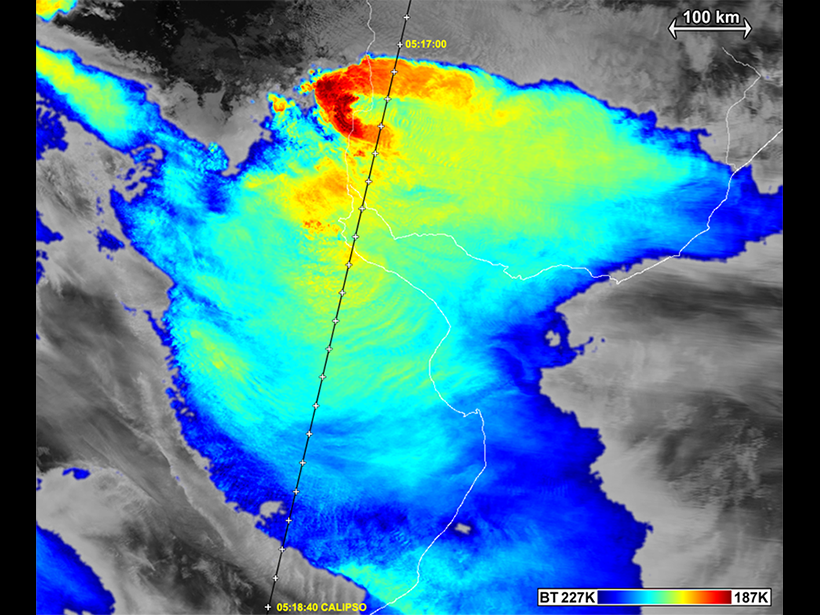Polarity reversals in the solar wind magnetic field disconnect the magnetic field trailing behind Venus, allowing ions from the atmosphere to escape.
everything atmospheric
A (Dust) Devil of a Time—on Mars
New computer simulations of Martian dust devils could aid Red Planet weather forecasts.
Patches of Low Electron Density Help to Heat the Ionosphere
Simulations show how changes in electron density can trap electromagnetic waves and heat electrons in the ionosphere.
How Accurate Are Ionospheric Models?
A new study puts the latest version of a venerable model of Earth's ionosphere to the test, with some unexpected results.
When Thunderstorms Have Wings
A new study uncovers the origin of a gull wing–shaped cirrus cloud above an Argentinian thunderstorm captured in satellite images.
Predicting Temperature Shifts off the U.S. East Coast
New research reveals the relative importance of oceanic and atmospheric processes in year-to-year changes in ocean temperature along the Middle Atlantic Bight.
Adapting Weather Forecasting Techniques to Paleoclimate Studies
First results of the Last Millennium Climate Reanalysis Project demonstrate the potential of the method to improve historical climate estimates by linking proxy data with climate models.
Storms Cause Infrequent Turbulence for Aircraft, New Study Finds
Scientists using lightning sensors to automate air-turbulence detection have found evidence that storms jostle aircraft much less than previously thought.
Pluto's Interactions with the Solar Wind Are Unique
Space physicists say that Pluto's atmosphere interacts with the solar wind in a never-before-seen hybrid way, one that's both comet-like and planet-like.
Four Perspectives on Order From Chaos
What makes thunderstorms clump, even to the point of singularity, over uniform oceans? Three recent papers in JAMES address this question, and a new Commentary ties them together.






